By: Adam Hadhazy, Life's Little Mysteries Contributor
Published: 02/03/2012 04:25 PM EST on Lifes Little Mysteries
Millions of eyes will be glued to the gridiron this Sunday as the New England Patriots face the New York Giants in Super Bowl XLVI. It's the game of the year in American sports, and fans and pundits will dissect how the performances of key players, decisions by the coaches and calls by the referees affected the ultimate outcome.
And if one team decides to go for it on fourth down — eschewing a punt or easy field goal — it will surely be one of the hottest topics of debate. But should it be? Are fourth-down attempts really a bad decision?
The status quo is to trot out the kicking team on fourth down. Unless it's late in a game and the team on offense is losing, fourth downs on the offensive team's side of the field typically translate to an automatic punt. For fourth downs in an opponent's territory within about the 35-yard line, coaches usually opt to send in the field-goal unit, satisfied at a shot to put three points on the scoreboard.
Yet mathematics pounds this sort of conventional wisdom into the turf. Statistical analyses have shown that to give their team the best chance of winning, coaches should go for it more on fourth down. A lot.
And nowhere is that clearer than on that most tantalizing of fourth-down situations: fourth and one yard to go. "What the numbers suggest – and sometimes it seems crazy – but in almost all of those situations, it makes sense to go for it," said Brian Burke, founder of AdvancedNFLStats.com.
Math in the huddle
To reach this conclusion and others, Burke tallied data from 2,400 games during the 2000 through 2008 seasons. He threw out the second- and fourth-quarter data, as teams do unusual things when hurried as the clock ticks toward the half-time break, or in desperate late-game situations.
From this dataset, Burke calculated "expected points," defined as the average potential points a team can expect given a certain situation.
Naturally, expected points peak when an offense is mere yards away from their opponent's end zone, and expected points plummet for an offense mired by its own end zone. (In fact, the expected points dip into the negative for offenses within about their own 10-yard line, meaning the team most likely to eventually score next is the one on defense.)
Burke then summed up what option on fourth down — punt, field-goal attempt or first-down try — offered a team the most expected points, and thus a chance of ultimately winning the game. [Link Between Super Bowl Losses and Heart Attacks More Hype than Science]
"They're going for it!"
As it turns out, going for it on fourth and one from anywhere on the field makes statistical sense. Teams convert a fourth and one — which includes situations ranging from fourth-and-inches to fourth-and-a-yard-and-a-half — around 74 percent of the time.
Overall, limiting the number of possessions an opponent's offense gets, really stacks up in a team's favor. That strategy has grown even sounder in recent years because offenses have exploded. Just this season, quarterbacks racked up four of the six highest-ever totals for passing yardage.
"Offenses have gradually gotten the upper hand," Burke said. "The value of possession is so much greater because of the greater chance of scoring. You never want the other offense to have the ball, and field position" — usually the argument for punting — "has become less and less important."
Punts still do stand as the better option in many cases, for example on fourth and threes or more within an offense's own 30-yard line or so. But even at midfield it's statistically smarter to go for it on fourth and sixth, according to Burke's figures.
In fact, in most scenarios of score and time, when between an opponent's 45- and 30-yard line and facing a fourth down and 10 yards to go or less, offenses should stay on the field. A field goal adds up as a wiser move from about fourth and 11-plus at about the opponent's 33-yard line.
Mentally moving the chains
Other analyses, such as a study revised in 2005 by David Romer, an economics professor at the University of California, Berkeley, agree that coaches should be more aggressive when the referee signals fourth down.
Of course, statistics only speak to generalized, averaged situations. For teams with weak offensive lines, trying to surge ahead on a fourth-and-short to nab a first down is a tougher proposition.
So why do coaches — who dig through tons of stats looking for a winning edge — remain gun-shy on fourth down? Burke thinks it’s mostly psychological. "There's an asymmetric intuition about gaining things and losing things," Burke said. "We fear losing something much more than experiencing the happiness of gaining it."
Also, the conventional wisdom in football about when to punt derives from a less-high-powered game of decades ago, when field position mattered more.
Some sports analysts have argued that coaches fear taking the blame for botched, risky fourth-down attempts. Bill Belichick, the Patriots' coach, has been there before. In a Nov. 15, 2009, game against the arch-rival Indianapolis Colts, with 2:08 remaining, Belichick went for it on fourth-and-two from the Patriots' 28-yard line. Punting would have given the ball to quarterback Peyton Manning and a red-hot offense, but the criticisms poured in.
According to Burke's stats, Belichick made the right call. Other gutsy fourth-down calls in this year's playoffs have Burke thinking that "some coaches are really catching on."
Follow Life's Little Mysteries on Twitter @llmysteries, then join us on Facebook.